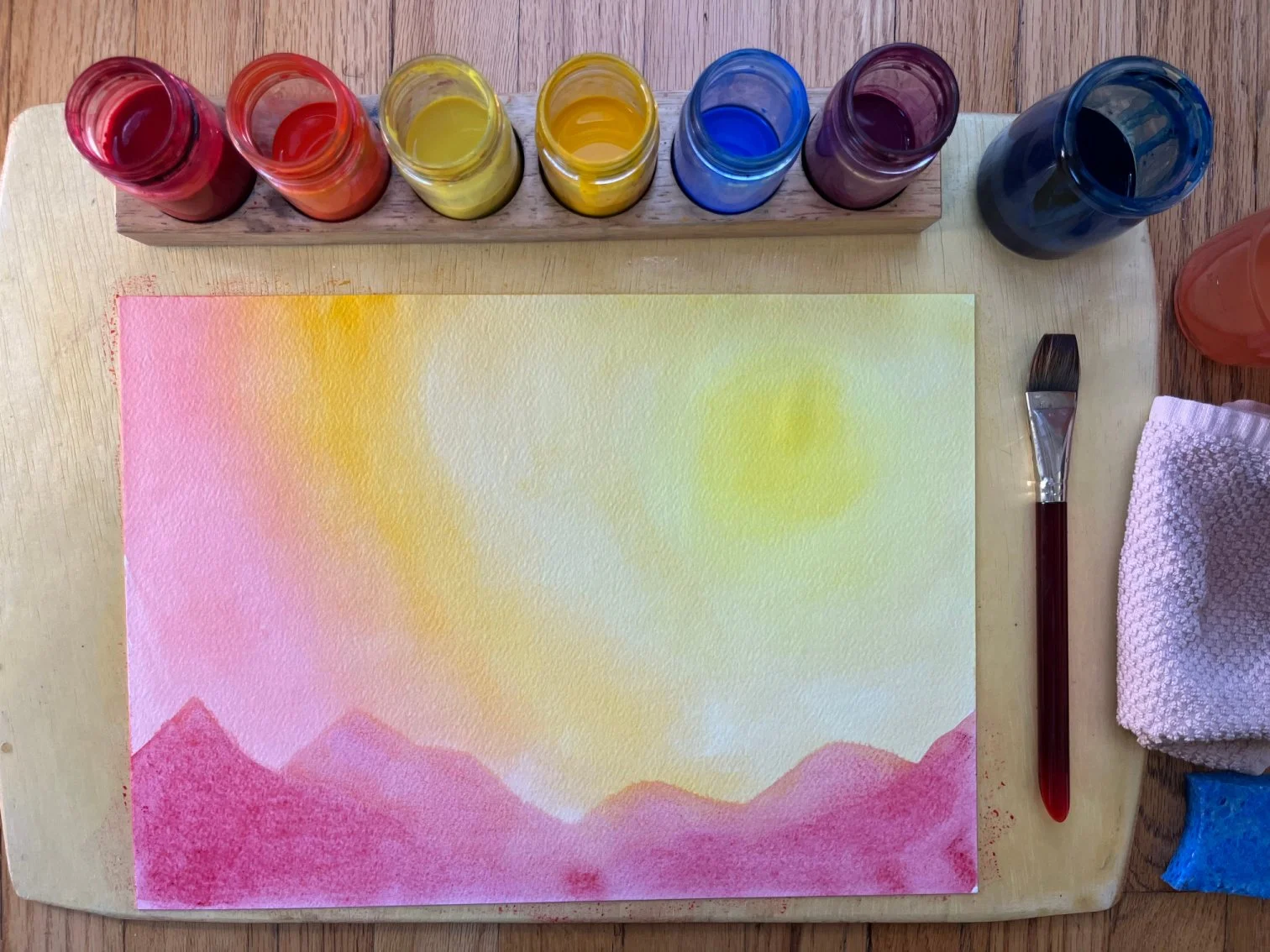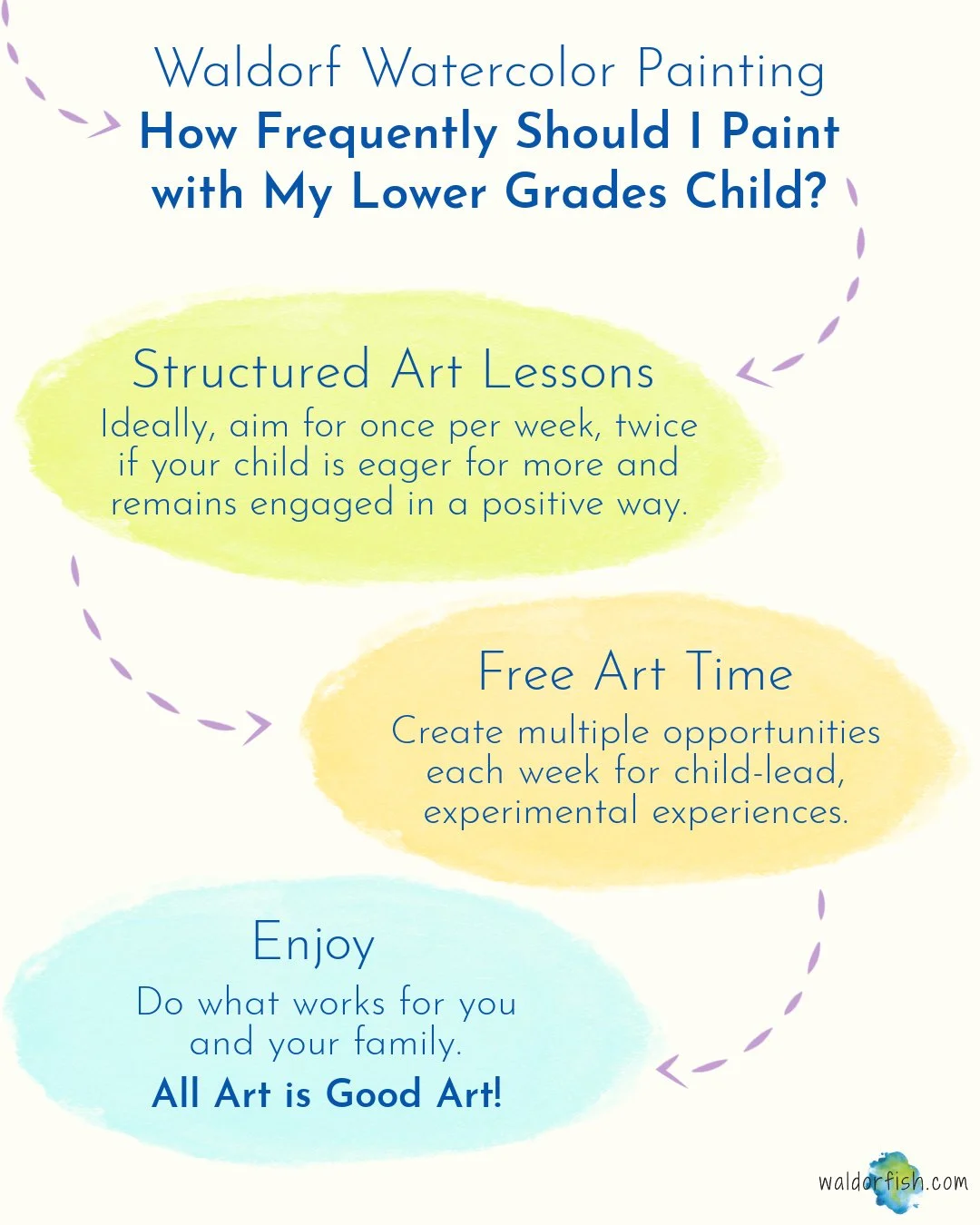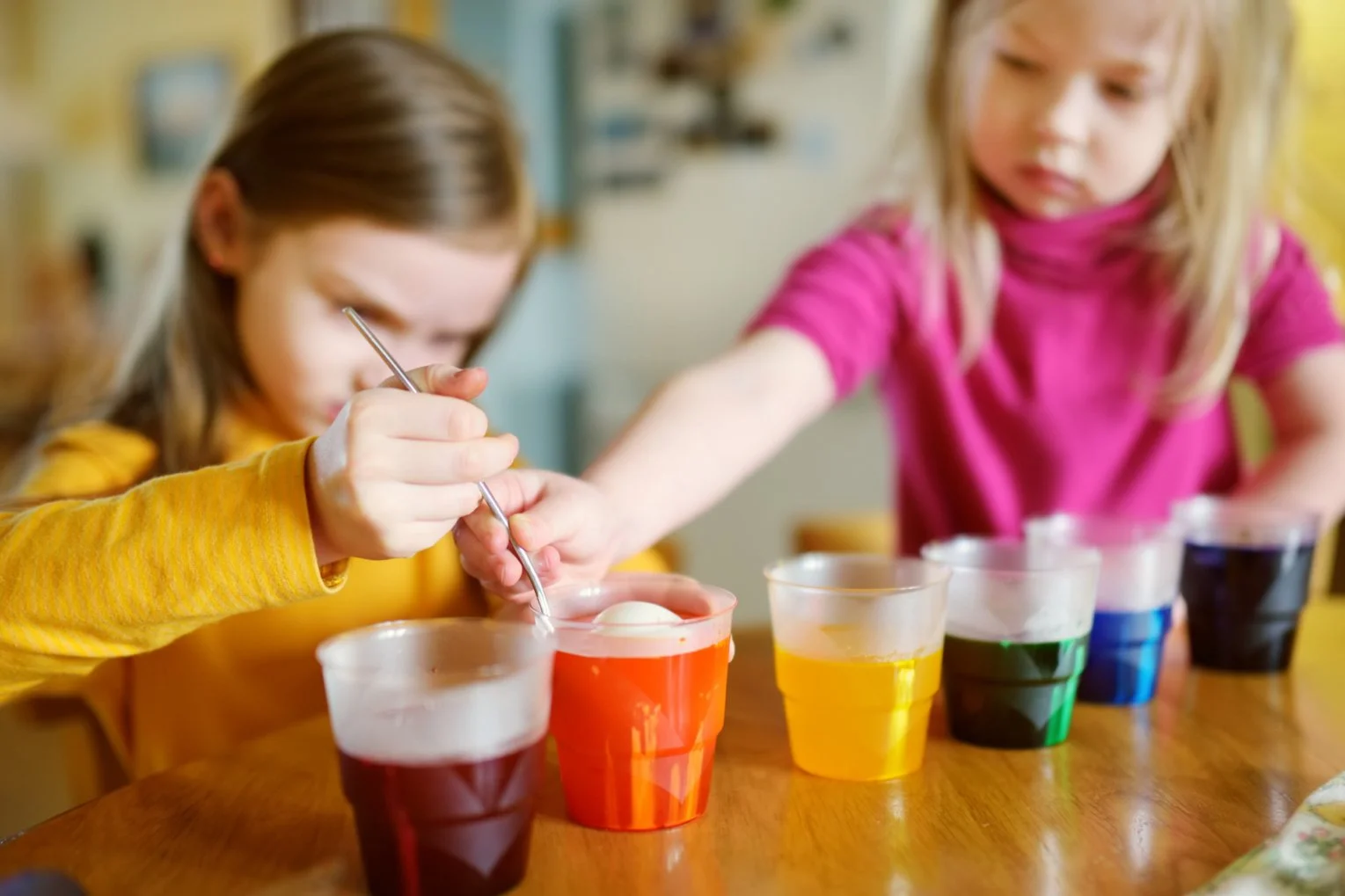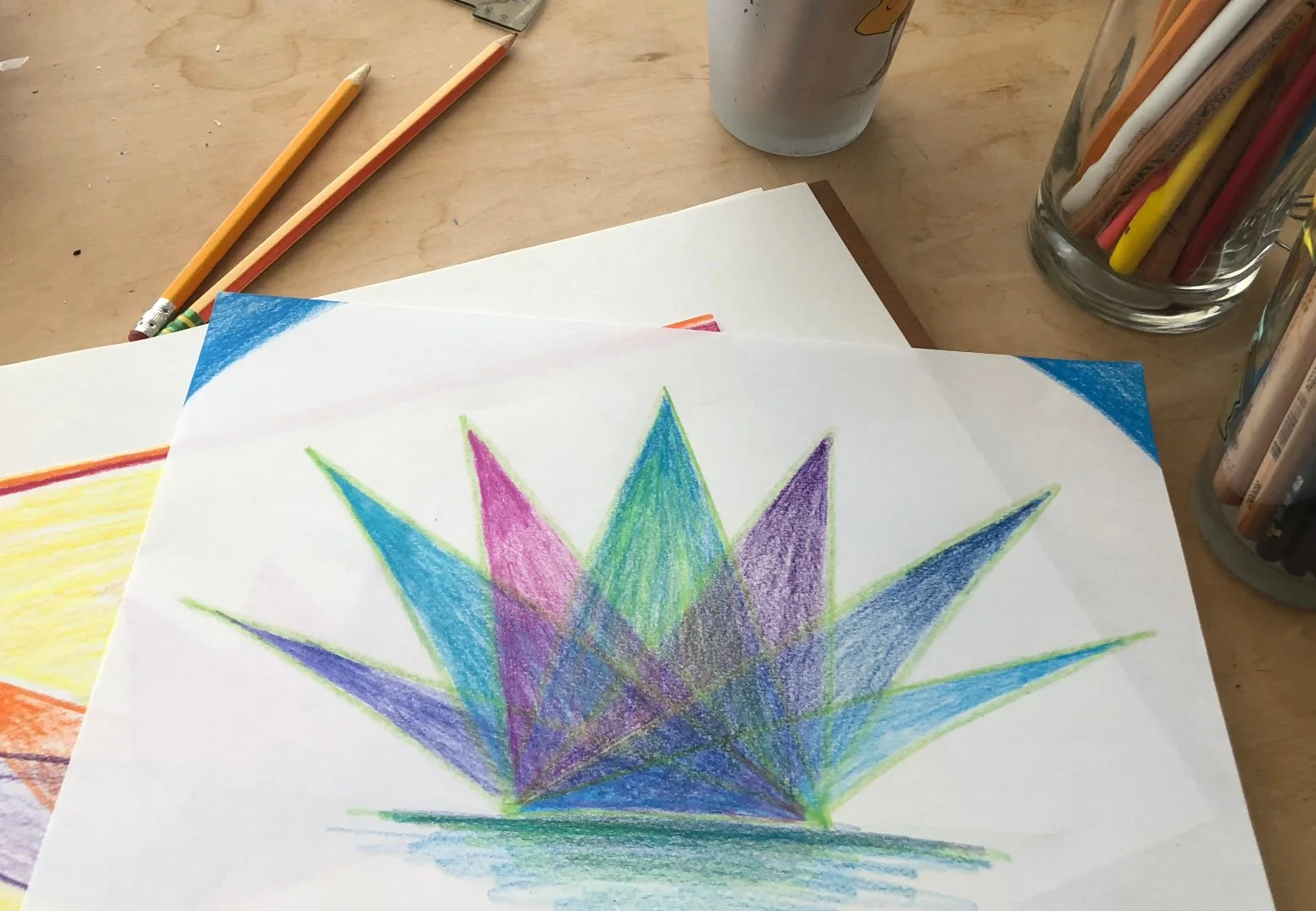Waldorf Painting Curriculum FAQ’s: How Often Should I Paint with My Lower Grades Child?
Watercolor painting is a staple of Waldorf curriculum, especially in the lower grades (1-4).
A painting from our third grade painting course- a great option for “structured art” time!
First grade paintings are done with one to two colors, and the child is encouraged to build a relationship with color through experience and connection. From there, the second grader finds form in their painting, and the third grade combines color with form for all the more complex and beautiful works of art. As students grow older, paintings grow in their intricacy and subject matter, and are always connected to nature, the seasons, and the curriculum.
A question that often comes through our inbox, especially from homeschooling families, is: How often should I paint with my lower grades child?
This is a great question! From our years of experience in working with students in the classroom and in the homeschool space, we've learned that there are great benefits to two different approaches: structured art time and free art time.
Watercolor painting, when done with a Waldorf approach, falls into the “structured art” category.
The painting activity comes with a fully formed lesson. The adult educator sets up the space, may choose to utilize a verse and set a mood of reverence, and paints alongside the child, leading them through the process from start to finish. It is a time where the educator is truly the captain of the ship, and the children have the opportunity to immerse themselves in the guided experience.
Ideally, we suggest doing structured art time once a week, or more, if you feel your child remains positively engaged with the lessons! In this case, less can really feel like more.
The second category of “free art time” creates opportunities where the child is leading the way.
They can experiment with all kinds of supplies, and work without much guidance- it's their time to create, play, and try new things. Watercolor painting can certainly be a part of this activity as well! Here, the educator is the host, making sure everyone has what they need to create safely, freely, and with joy.
Free art time can be a time of creativity and experimentation!
Free art time can be a part of a rhythm in whatever way works best for the student and the educator. Once a week, twice a week, everyday- as long as the student is engaged during the free art time, it’s a great time for art!
Lastly, and perhaps most importantly, we are big proponents of the idea that all art is good art!
There are many approaches to teaching watercolor painting and other art mediums, and sometimes it can feel overwhelming to get it “right.” We encourage you to dive in, try it out, and adjust from there. Bringing art into your rhythm should feel doable and meaningful, and however that works best for you and your children is the way to go.
Enjoy!
About the Authors
Robyn Beaufoy is Waldorfish’s CEO, and also a course instructor for Simple Season,, Waldorf Art for Beginners, and Weekly Art Foundations. You’ll find her intuitive touches and influences throughout everything Waldorfish offers. Robyn has been in the world of education for over 25 years, with an MA in Education and a certification in Waldorf teaching - she also homeschooled both of her children for some of that time. In 2012 Robyn co-founded Waldorfish.com, creating it with the vision of making Waldorf inspired-art and pedagogy more accessible, joyful, and doable for homeschoolers all over the world.
Caitlin Amajor is Waldorfish’s course instructor for Geometry grades 5 & 6, and Botany, as well as our Administrative Assistant. From a young age, Caitlin has been immersed in Waldorf education, attending a Waldorf school from K-8. After receiving a BA in History, Caitlin gained her certification in Waldorf teaching, and spent seven years as a Waldorf class teacher in the upper grades. With a special fondness for watercolor painting and geometry, Caitlin loves bringing Waldorf education to her students all over the world, and seeing their own individuality and style bloom from the curriculum!











